
How to Use powerbank (20000mAh): Examples, Pinouts, and Specs
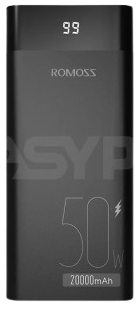
 Design with powerbank (20000mAh) in Cirkit Designer
Design with powerbank (20000mAh) in Cirkit DesignerIntroduction
The Romoss Powerbank (20000mAh) is a portable battery pack designed to charge electronic devices such as smartphones, tablets, and other USB-powered gadgets on the go. With its high capacity of 20000mAh, it provides multiple charging cycles for most devices, making it an essential accessory for travel, outdoor activities, and emergency power needs.
Explore Projects Built with powerbank (20000mAh)
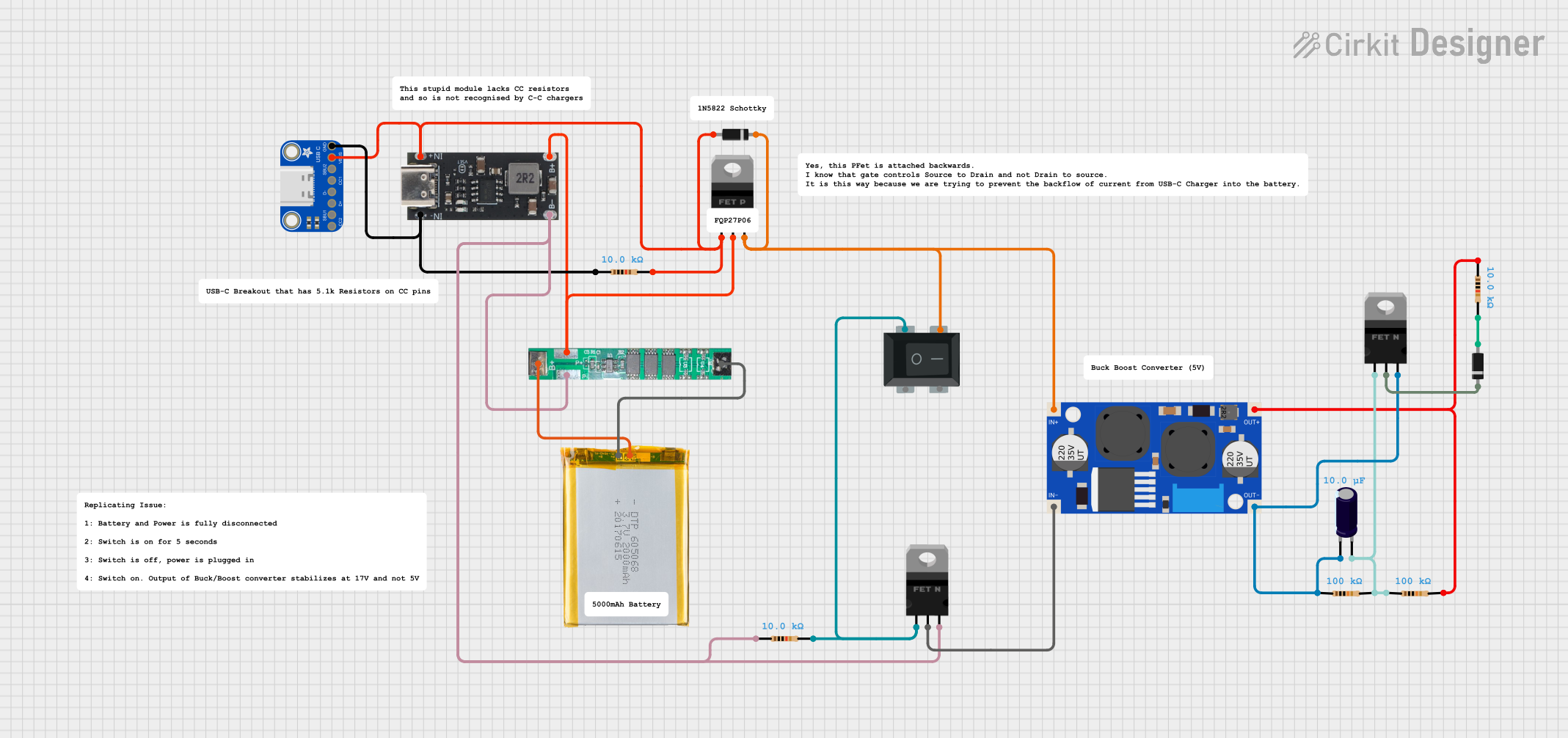
 Open Project in Cirkit Designer
Open Project in Cirkit Designer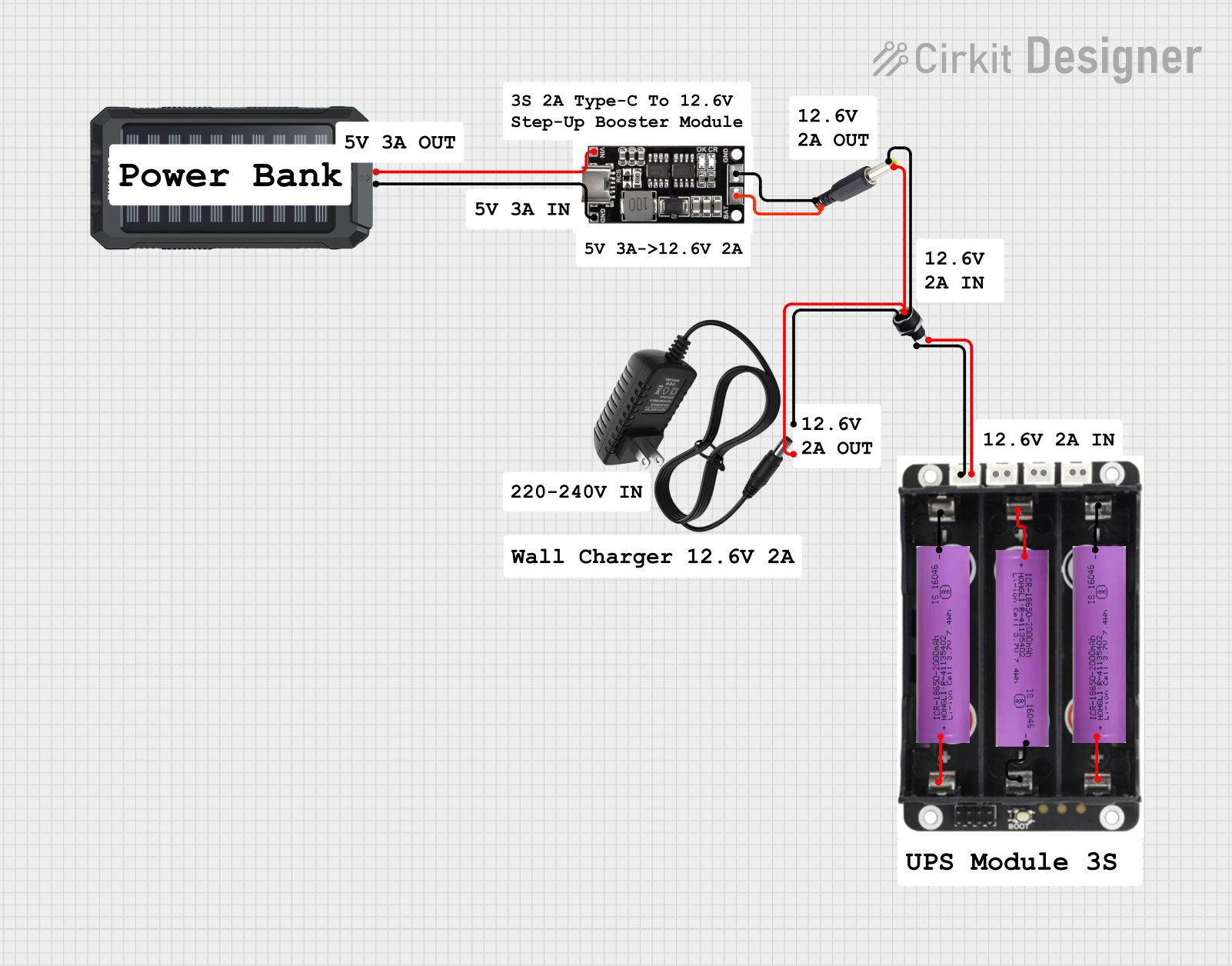
 Open Project in Cirkit Designer
Open Project in Cirkit Designer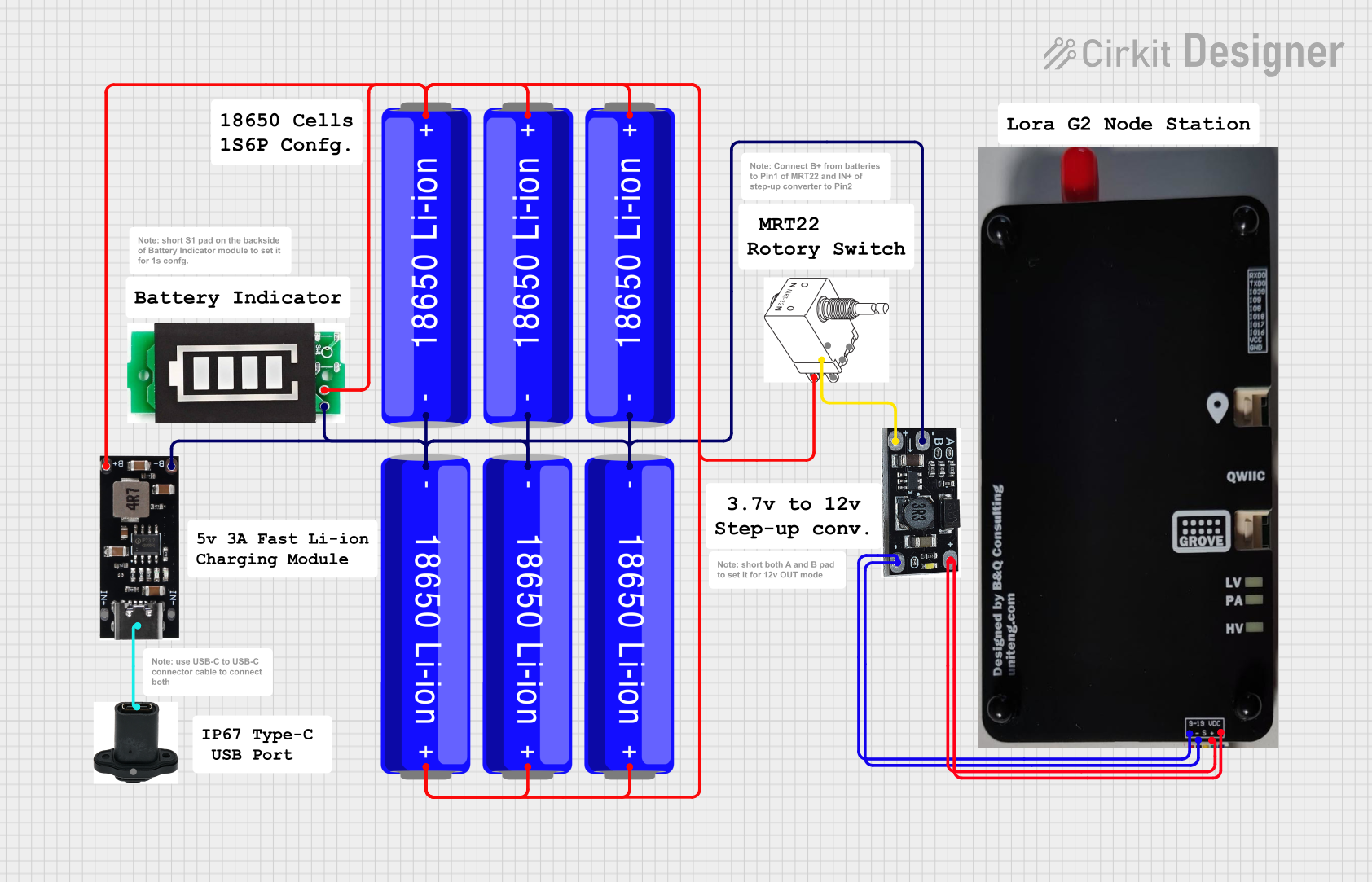
 Open Project in Cirkit Designer
Open Project in Cirkit Designer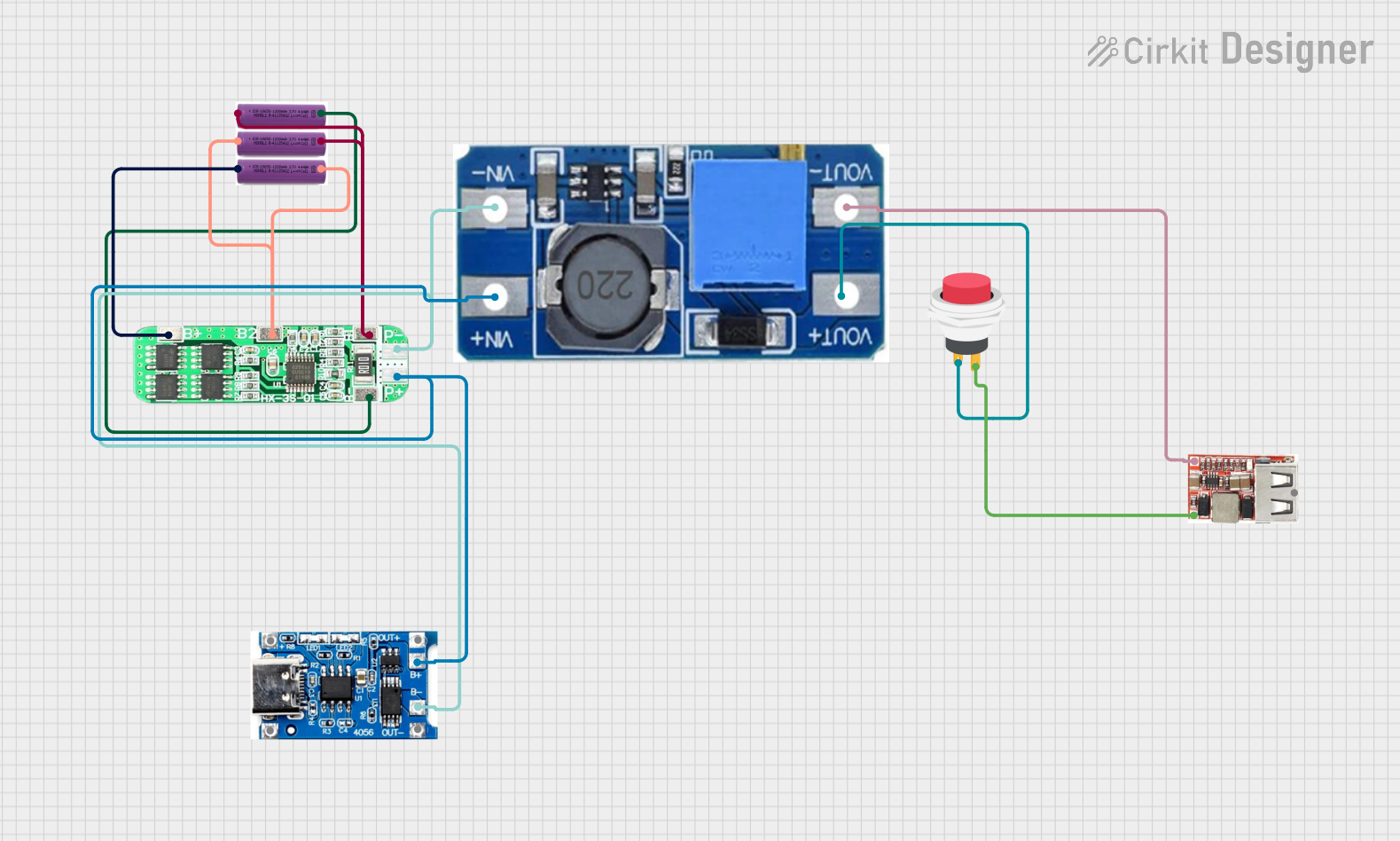
 Open Project in Cirkit Designer
Open Project in Cirkit DesignerExplore Projects Built with powerbank (20000mAh)

 Open Project in Cirkit Designer
Open Project in Cirkit Designer
 Open Project in Cirkit Designer
Open Project in Cirkit Designer
 Open Project in Cirkit Designer
Open Project in Cirkit Designer
 Open Project in Cirkit Designer
Open Project in Cirkit DesignerCommon Applications and Use Cases
- Charging smartphones, tablets, and smartwatches during travel.
- Providing backup power during power outages.
- Powering USB-powered devices such as LED lights, fans, or small gadgets.
- Supporting outdoor activities like camping or hiking where access to power is limited.
Technical Specifications
Key Technical Details
| Parameter | Specification |
|---|---|
| Manufacturer | Romoss |
| Part ID | Powerbank |
| Battery Capacity | 20000mAh |
| Input Ports | Micro-USB, USB-C |
| Input Voltage/Current | 5V/2.1A (Micro-USB), 5V/3A (USB-C) |
| Output Ports | 2 x USB-A, 1 x USB-C |
| Output Voltage/Current | 5V/2.1A (USB-A), 5V/3A (USB-C) |
| Dimensions | 6.5 x 3.1 x 0.9 inches |
| Weight | 450g |
| Charging Time | ~6-8 hours (via 18W fast charging) |
Pin Configuration and Descriptions
| Port/Pin Name | Type | Description |
|---|---|---|
| Micro-USB | Input | Used to charge the powerbank (5V/2.1A input). |
| USB-C | Input/Output | Dual-purpose port for charging the powerbank or powering devices (5V/3A). |
| USB-A (x2) | Output | Standard USB ports for charging devices (5V/2.1A output per port). |
| LED Indicators | Indicator | Displays the remaining battery percentage (4 LEDs: 25%, 50%, 75%, 100%). |
| Power Button | Control | Turns the powerbank on/off and activates the LED indicators. |
Usage Instructions
How to Use the Powerbank in a Circuit
Charging the Powerbank:
- Connect the Micro-USB or USB-C input port to a power source (e.g., wall adapter or computer).
- Ensure the input voltage and current match the specifications (5V/2.1A for Micro-USB or 5V/3A for USB-C).
- The LED indicators will blink to show the charging progress. When all LEDs are solid, the powerbank is fully charged.
Charging Devices:
- Connect your device to one of the output ports (USB-A or USB-C) using a compatible cable.
- Press the power button to start charging. The LED indicators will show the remaining battery level.
- Disconnect the device once it is fully charged to conserve power.
Using USB-C as Input/Output:
- The USB-C port can be used to charge the powerbank or to charge devices. Ensure the correct cable and power source are used.
Important Considerations and Best Practices
- Use only high-quality charging cables to prevent damage to the powerbank or connected devices.
- Avoid exposing the powerbank to extreme temperatures (below 0°C or above 45°C).
- Do not overcharge the powerbank; unplug it once fully charged to extend battery life.
- Store the powerbank in a cool, dry place when not in use for extended periods.
- If the powerbank is not used for a long time, recharge it every 3 months to maintain battery health.
Arduino UNO Example (Powering an Arduino UNO)
The Romoss Powerbank can be used to power an Arduino UNO via its USB-A output port. Below is an example of how to connect and use it:
- Connect the USB-A port of the powerbank to the Arduino UNO's USB input using a USB cable.
- Press the power button on the powerbank to start supplying power to the Arduino UNO.
// Example Arduino code to blink an LED while powered by the powerbank
// This code assumes an LED is connected to pin 13 of the Arduino UNO.
void setup() {
pinMode(13, OUTPUT); // Set pin 13 as an output pin
}
void loop() {
digitalWrite(13, HIGH); // Turn the LED on
delay(1000); // Wait for 1 second
digitalWrite(13, LOW); // Turn the LED off
delay(1000); // Wait for 1 second
}
Troubleshooting and FAQs
Common Issues and Solutions
| Issue | Possible Cause | Solution |
|---|---|---|
| Powerbank does not charge devices. | Powerbank is out of charge. | Recharge the powerbank using a compatible charger. |
| Faulty cable or connection. | Use a different cable and ensure a secure connection. | |
| Powerbank does not charge itself. | Incompatible or faulty charger. | Use a charger that meets the input specifications (5V/2.1A or 5V/3A). |
| Damaged input port. | Inspect the port for damage and contact the manufacturer if necessary. | |
| LED indicators do not light up. | Powerbank is completely discharged. | Charge the powerbank for at least 30 minutes before checking again. |
| Faulty LED indicators. | Contact the manufacturer for repair or replacement. |
FAQs
How many times can the powerbank charge my smartphone?
- The number of charges depends on your smartphone's battery capacity. For example, a 3000mAh phone can be charged approximately 5-6 times.
Can I charge multiple devices simultaneously?
- Yes, the powerbank supports charging multiple devices at the same time via its USB-A and USB-C ports. However, the total output current should not exceed the rated capacity.
Is the powerbank safe to use during charging?
- Yes, the powerbank includes built-in safety features such as overcharge protection, short-circuit protection, and temperature control.
Can I take the powerbank on a plane?
- Most airlines allow powerbanks with a capacity below 100Wh. The Romoss Powerbank (20000mAh) has a capacity of approximately 74Wh, making it safe for air travel. Always check with your airline for specific regulations.
By following this documentation, users can effectively utilize the Romoss Powerbank (20000mAh) for their portable power needs.